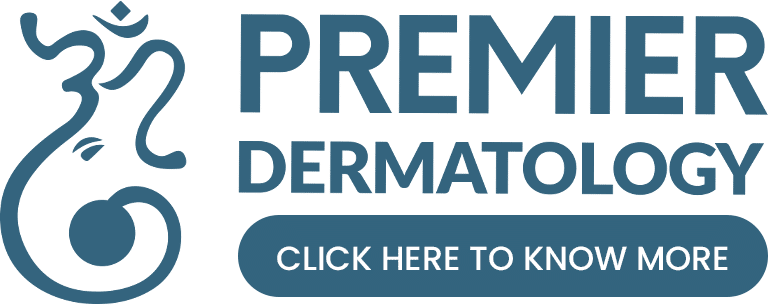Taking care of your health is one of the most important steps you can take for yourself. Regular checkups play a vital role in staying proactive about your well-being. These visits are not just about addressing current concerns but also about preventing future issues.
Early detection of potential problems can make a significant difference. Screenings like Pap smears and breast exams are essential tools in maintaining your health. They help identify issues before they become serious, giving you peace of mind.
Different stages of life come with unique needs. From teens to post-menopause, your care plan should adapt to your age and lifestyle. Monitoring vital signs such as blood pressure and heart rate is also crucial for a complete picture of your health.
Preparation can make the process smoother. Scheduling around your menstrual cycle and bringing a support person can help you feel more comfortable. For more tips on what to expect, check out this helpful guide.
Key Takeaways
- Regular checkups help detect health issues early.
- Essential screenings include Pap smears and breast exams.
- Age-specific recommendations ensure tailored care.
- Vital signs like blood pressure are key indicators of health.
- Preparation tips can make the experience more comfortable.
Introduction to the Annual Physical Exam
Prioritizing your well-being starts with regular health evaluations. These visits help establish a baseline for your overall health and track changes over time. By monitoring key metrics, you can catch potential issues early and take proactive steps to maintain your wellness.
The CDC recommends these evaluations as a cornerstone of preventive care. They serve a dual purpose: identifying risks through screenings and addressing any current concerns. Whether it’s managing stress or discussing lifestyle habits, these visits are tailored to your unique needs.
For women, these evaluations are especially important. They provide an opportunity to discuss reproductive health, mental well-being, and other gender-specific concerns. Open and honest communication with your provider ensures you receive the best care possible.
Costs for these visits average around $199 without insurance. However, many providers offer virtual wellness visits for convenience. While these are helpful for minor concerns, in-person evaluations are often necessary for comprehensive screenings.
Here’s what you can expect during your visit:
- Establishing a health baseline for future comparisons.
- Preventive screenings tailored to your age and lifestyle.
- Addressing any current health concerns or symptoms.
- Discussing ways to improve your overall health.
Taking the time for these evaluations is an investment in your long-term wellness. By staying informed and proactive, you can make informed decisions about your health.
What to Expect During Your Annual Physical Exam

Understanding what happens during your health visit can ease any concerns. Your provider will focus on key areas to assess your overall well-being. This includes reviewing your medical history and checking vital signs like blood pressure and heart rate.
Medical History Review
Your provider will start by discussing your medical history. This includes any past illnesses, surgeries, or chronic conditions. They’ll also ask about your family’s health, especially risks for cancer or heart disease.
Medication reconciliation is another important step. Be ready to share all medications, supplements, or vitamins you’re taking. This helps avoid potential interactions or side effects.
Your lifestyle habits will also be evaluated. Topics like diet, exercise, and substance use may come up. This helps your provider offer tailored advice for improving your health.
Vital Signs Check
Next, your provider will measure your vital signs. This includes blood pressure, heart rate, and oxygen levels. These metrics give a snapshot of your current health status.
Your weight and height will also be recorded to calculate your BMI. This helps assess whether you’re in a healthy range for your age and build.
| Vital Sign | Healthy Range |
|---|---|
| Blood Pressure | Less than 120/80 mmHg |
| Heart Rate | 60-100 beats per minute |
| Oxygen Levels (SpO2) | Above 94% |
These checks are quick but provide valuable insights. They help your provider identify any immediate concerns and guide further testing if needed.
Essential Tests and Screenings for Women

Preventive care for women includes essential screenings to detect potential issues early. These tests are designed to identify risks before they become serious, ensuring you stay on top of your health. From cervical cancer to breast cancer, these evaluations are tailored to meet your specific needs.
Pap Smear and Cervical Cancer Screening
A Pap smear is a key screening tool for cervical cancer. During the procedure, a speculum is used to collect cells from the cervix. These cells are then examined for abnormalities that could indicate cancer or precancerous conditions.
The ACOG recommends HPV/Pap co-testing every five years for women aged 30 and older. This combined approach increases the accuracy of detecting cervical cancer early. If results are abnormal, follow-up procedures like colposcopy or biopsies may be necessary.
For sexually active patients, STI testing is also recommended. This ensures comprehensive care and addresses any potential infections that could impact your health.
Breast Examination and Mammograms
Breast cancer screenings are another critical component of women’s health. A clinical breast exam involves both visual inspection and manual palpation to check for lumps or changes in breast tissue.
Mammograms are essential for early detection of breast cancer. The ACOG suggests starting baseline mammograms at age 40, with annual screenings beginning at 45. These imaging tests can identify tumors that are too small to feel, improving the chances of successful treatment.
If abnormalities are found, additional tests like ultrasounds or biopsies may be required. Staying consistent with these screenings is vital for maintaining your long-term health.
Age-Specific Recommendations for Women
As women progress through different stages of life, their health needs evolve significantly. Understanding these changes helps in tailoring care to meet specific requirements. From reproductive health to bone density, each age group has unique priorities.
Women in Their 20s and 30s
In your 20s and 30s, focus on establishing a strong health foundation. Regular tests for STIs and discussions about contraception are essential. Baseline cholesterol checks can help identify early risk factors for heart disease.
Reproductive health is a key concern during this period. Regular screenings and open conversations with your provider ensure you stay informed. If you have a family history of certain conditions, additional evaluations may be recommended.
Women in Their 40s and Beyond
As you enter your 40s, preventive care becomes even more critical. Scheduling regular mammograms and thyroid function tests helps detect potential issues early. Diabetes screening is also important, especially if you have risk factors like obesity or a sedentary lifestyle.
Bone density tests, such as DEXA scans, are recommended starting at 40. These help assess your risk for osteoporosis. For women over 50, colorectal screening becomes a priority. Preventive measures like colonoscopies are essential for early detection of digestive health issues.
Managing perimenopause symptoms and assessing falls risk are also crucial. Regular eye and ear check-ups ensure you maintain optimal sensory health as you age.
Preparing for Your Annual Physical Exam
Getting ready for your health visit can make the process smoother and more productive. Proper preparation ensures you make the most of your time with your provider. It also helps you feel more confident and in control of your care.
What to Bring to Your Appointment
Bringing the right information and documents is crucial for a successful visit. Here’s a checklist of essentials:
- Insurance card and photo ID
- List of current medications, including supplements
- Vaccination records
- Previous test results or medical reports
Consider keeping a symptom diary to track any concerns. This can help your provider better understand your health needs.
Questions to Ask Your Healthcare Provider
Having a list of questions ready ensures you leave your appointment with clarity. Here are some examples:
- “What’s my breast density score?”
- “Should I consider BRCA testing?”
- “Are there any changes I should make to my diet or lifestyle?”
Wearing easy-to-remove clothing can make physical assessments quicker and more comfortable. After your visit, take notes on any recommendations or next steps.
| Essential Documents | Purpose |
|---|---|
| Insurance Card | Verify coverage and billing |
| Photo ID | Confirm identity |
| Medication List | Avoid drug interactions |
| Vaccination Records | Ensure up-to-date immunizations |
By preparing ahead of time, you can ensure your health visit is efficient and productive. Taking these steps helps you stay proactive about your well-being.
Understanding the Results of Your Exam
Understanding your health results is key to staying proactive. Your test outcomes provide valuable insights into your well-being. Knowing what these numbers mean can help you address potential problems early and make informed decisions about your care.
Interpreting Blood Test Results
Blood tests are a common part of health evaluations. They measure various markers to assess your overall health. Here’s a breakdown of key results:
- Complete Blood Count (CBC): WBC should be between 4,500-11,000, and hemoglobin (Hgb) between 12-16 g/dL.
- Lipid Panel: LDL cholesterol should be below 100 mg/dL, and HDL above 50 mg/dL.
- Fasting Glucose: Levels below 100 are normal, while 100-125 indicate prediabetes.
- Thyroid TSH: Normal range is 0.4-4.0 mIU/L.
These results help identify risks for conditions like disease or metabolic changes. If your numbers fall outside the normal range, your provider may recommend further testing or lifestyle adjustments.
Next Steps After Abnormal Findings
Abnormal results don’t always mean serious problems, but they do require attention. Here’s what to expect:
| Finding | Next Step |
|---|---|
| Suspicious lump or mass | Biopsy referral for further analysis |
| High cholesterol or glucose | Diet and exercise plan, possibly medication |
| Chronic condition (e.g., diabetes) | Ongoing management and monitoring |
Your provider will guide you through the process. Staying informed and proactive ensures you address any changes in your health effectively.
Conclusion
Staying proactive about your health is essential for long-term well-being. Regular evaluations help catch 87% of preventable diseases early, making them a cornerstone of preventive care. For women, these visits are especially important, offering tailored screenings and addressing unique concerns.
Follow up every 12 months to stay on track. Don’t hesitate to ask for detailed explanations of your results. If something feels off, insist on further investigation. Telehealth options are also available for convenient follow-up consultations.
Take charge of your health today. Schedule your overdue evaluation and prioritize your well-being. Your future self will thank you.


